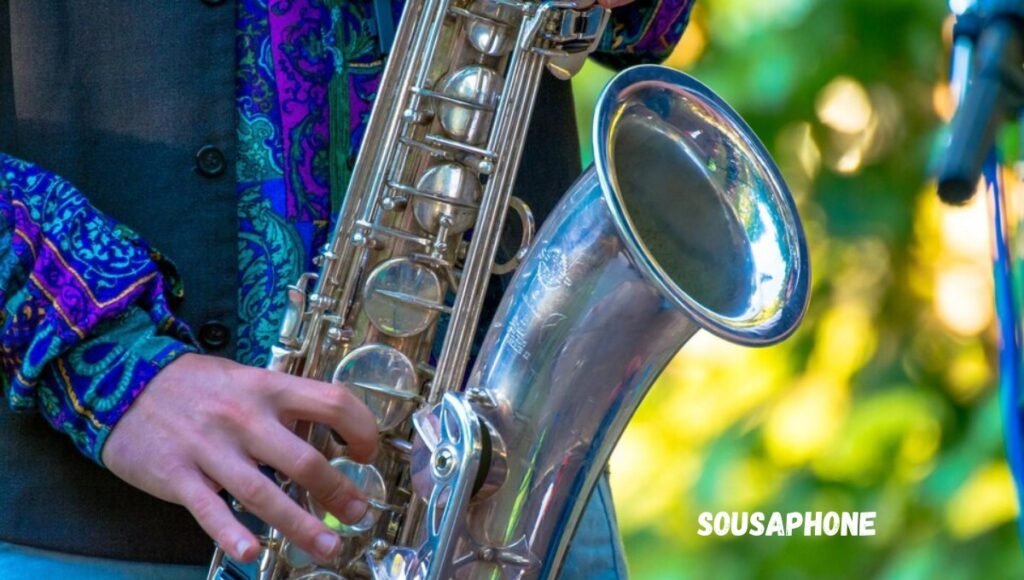The sousaphone is a large brass instrument designed to wrap around the player’s body, making it easier to carry while marching. Named after the famous American composer and conductor John Philip Sousa, the sousaphone is essentially a specialized type of tuba. Its circular shape and front-facing bell allow musicians to project sound effectively, especially during outdoor performances. It is commonly used in marching bands and is a staple in American football halftime shows and parades. Despite its size, the sousaphone is played similarly to a tuba, requiring a strong embouchure and deep breath control.
History of the Sousaphone
The sousaphone was developed in the late 19th century by John Philip Sousa and the J.W. Pepper company, with the aim of creating a more portable version of the concert tuba. Sousa, a leading figure in American military and marching band music, wanted an instrument that would be easier to maneuver while producing a bold, resonant sound ideal for outdoor performances. The early versions of the sousaphone had upright bells, but over time, the design evolved into the forward-facing bell that we commonly see today, allowing for greater sound projection.
How the Sousaphone Works
As a brass instrument, the sousaphone produces sound when the player vibrates their lips into the mouthpiece, causing air to flow through the tubing. The length and width of the sousaphone’s tubing, as well as its large bell, help to produce deep, rich tones characteristic of bass instruments. The sousaphone typically plays the bass line in band arrangements, complementing higher-pitched instruments. Players use a combination of breath control and valve manipulation to produce different notes. Despite its size, the sousaphone requires agility and stamina to play, especially during long marches.
Differences Between a Sousaphone and a Tuba
Though the sousaphone and the tuba are both low brass instruments, they differ in terms of design and usage. The tuba, which is used in orchestras and concert bands, has a vertical bell, while the sousaphone has a forward-facing bell for better projection in outdoor settings. The tuba is usually played while seated, whereas the sousaphone is designed for marching, with its circular shape allowing it to rest on the player’s shoulders. Although their sound quality is similar, the sousaphone is optimized for mobile performances, making it more practical for parades and field shows.
The Role of the Sousaphone in Modern Bands
The sousaphone continues to play a crucial role in marching bands, both at the high school and collegiate levels, as well as in drum corps and military bands. Its ability to project sound over large distances makes it indispensable during outdoor performances. In addition to its function as a bass instrument, the sousaphone often provides rhythmic drive and musical foundation in a band setting. Its presence is felt not just in traditional marching bands, but also in modern brass ensembles and even jazz bands, where its rich tones can be adapted to a variety of musical styles.
Tips for Playing the Sousaphone
Playing the sousaphone requires a combination of physical strength, endurance, and musical technique. Due to its size, players must have good posture and balance to manage the weight of the instrument during long performances. Strong breath control is essential to sustain the low notes that the sousaphone is known for, and players should focus on developing their embouchure to produce clear, resonant tones. Additionally, mastering finger coordination for valve manipulation will allow musicians to play complex passages with ease. Regular practice and physical conditioning are key to becoming a proficient sousaphonist.
Conclusion
The sousaphone is a distinctive and essential instrument in marching bands, known for its bold sound and unique design. Its development was a response to the need for a portable tuba capable of projecting sound in outdoor settings, making it a mainstay in parades, field shows, and military performances. Although challenging to play due to its size and weight, the sousaphone’s deep tones provide the musical foundation in many ensembles. Whether in traditional or contemporary musical settings, the sousaphone continues to be a powerful force in the world of brass instruments, beloved for its rich, resonant voice.
FAQs about the Sousaphone
What is the difference between a sousaphone and a tuba?
While both are low brass instruments, the sousaphone is designed for marching, with a circular shape and a forward-facing bell, while the tuba is used in seated performances and has a vertical bell.
How heavy is a sousaphone?
A typical sousaphone weighs between 20 and 30 pounds, making it a physically demanding instrument to play, especially during long performances or marches.
Can a sousaphone be played indoors?
Yes, although the sousaphone is designed for outdoor use, it can be played indoors in large spaces, but it may be less practical than a tuba in more intimate concert settings.
What material is a sousaphone made of?
Sousaphones are typically made of brass, but modern versions may also be constructed from lighter materials like fiberglass to make them easier to carry.
Who invented the sousaphone?
The sousaphone was developed by John Philip Sousa in collaboration with the J.W. Pepper company in the late 19th century to create a more portable version of the tuba for marching bands.


